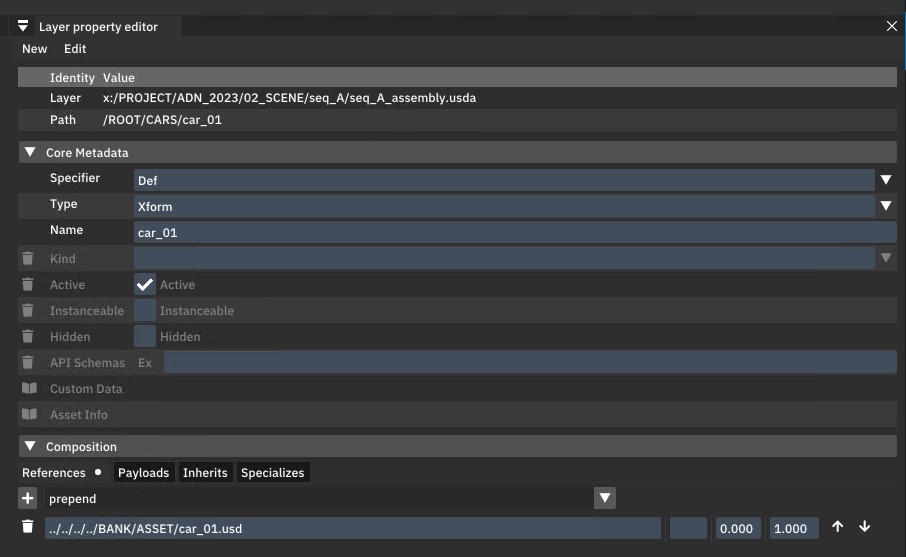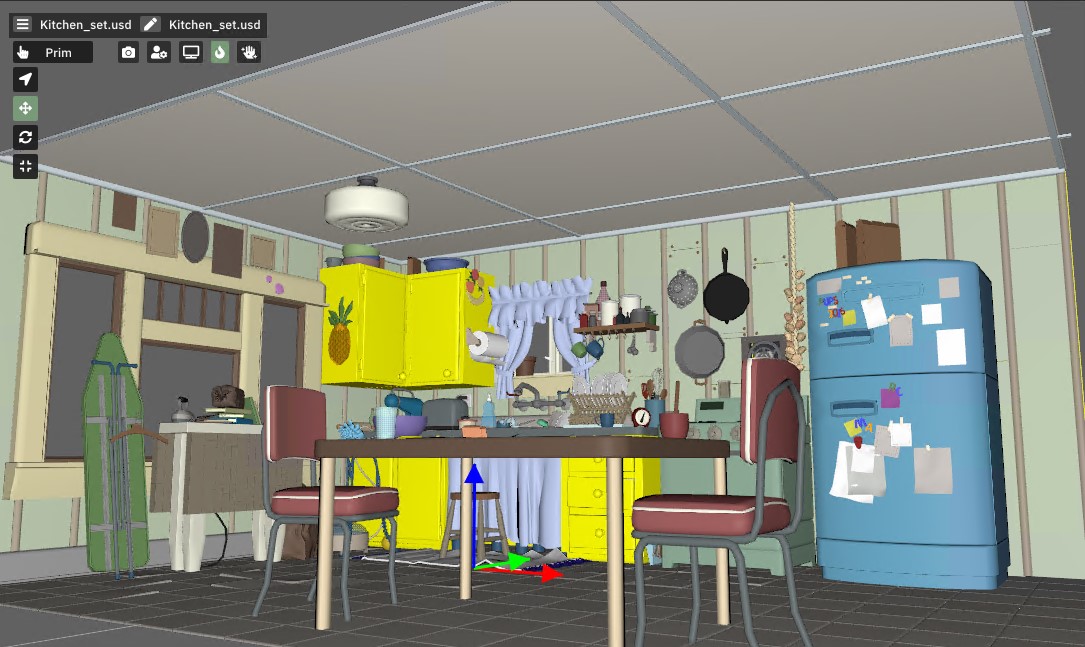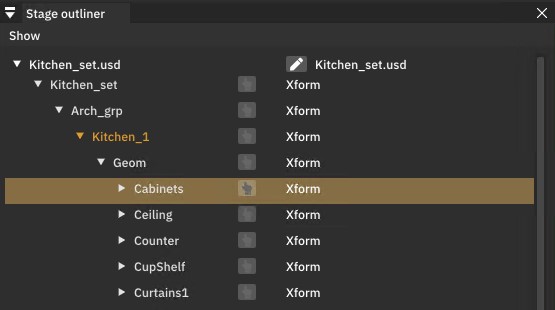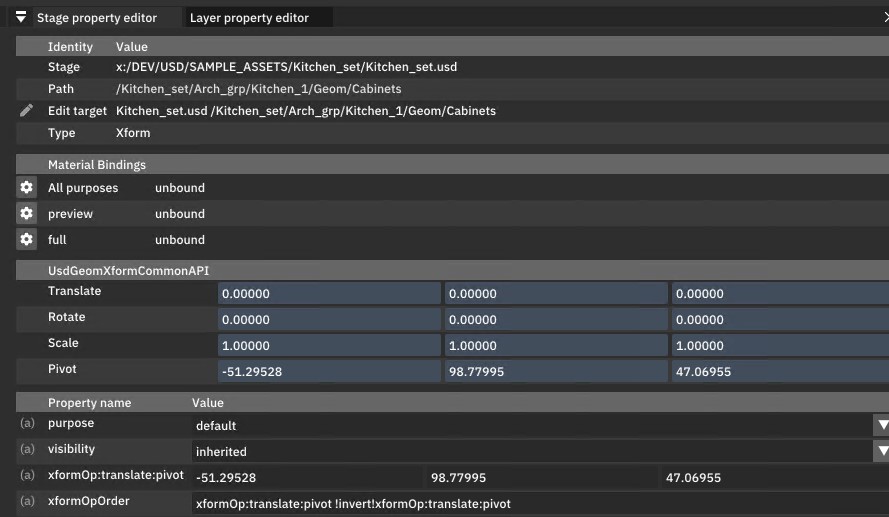Layer vs Stage
To effectively use usdtweak, it's important to understand the difference between operating on a layer level and on a stage level.
A layer is essentially a file containing data (prims) and links (composition arcs) to other files (layers) such as sublayers, references, and payloads, or even links to other prims. A stage represents a composed scene in memory, resolving various files (layers) and their data (prims) into a final structure based on the USD composition system, adhering to their strength ordering.
In usdtweak, these concepts are implemented as follows:
Layer
Opening a file as a layer will not display anything in the viewport. However, you can directly access the data in the "Layer Hierarchy" window.

Similar to a text editor, composition arcs appear as links. You can edit any prim in your layer using the "Layer Property Editor" window.

Stage
When opened as a stage, the first thing you'll notice is that your objects will appear in the viewport (if present).

Objects/prims can be selected in the viewport or through the "Stage Outliner" window.

Selected prims can be edited in the "Stage Property Editor" window.
